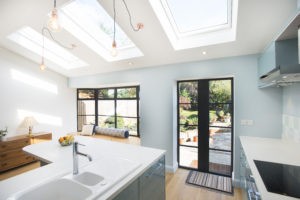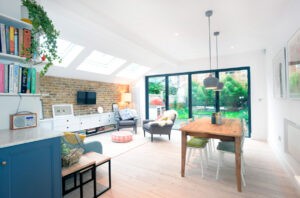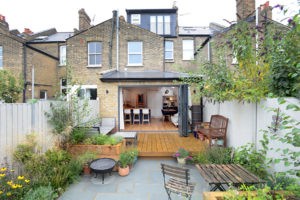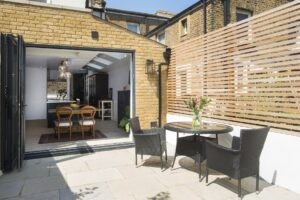In this rapidly evolving world, sustainability has become paramount, influencing every aspect of our lives, including how we design and construct our homes. A sustainable home is an eco-conscious dwelling that minimises its environmental impact through resource-efficient practices, adopting renewable energy, and environmentally friendly materials. So why is sustainability crucial?
Let’s take a moment to understand why sustainability is of paramount importance. As our planet faces unprecedented challenges due to climate change and dwindling natural resources, adopting eco-friendly practices is not just a choice but a responsibility. Sustainable homes help reduce carbon footprints, conserve energy and water, and create a healthier living environment for occupants and the surrounding community.
With the growing awareness of environmental issues and an increasing desire to contribute positively to the planet, more homeowners are embracing sustainability by opting for eco-conscious home extensions. These sustainable additions not only enhance the living space but also present an opportunity to demonstrate responsible stewardship of resources.
Building a sustainable home extension is a responsible choice and an investment in a greener, more resilient future. By adopting eco-conscious practices, integrating renewable energy sources, and utilising sustainable materials, you can create a living space that harmonises with the environment while offering comfort, efficiency, and cost savings for years to come.
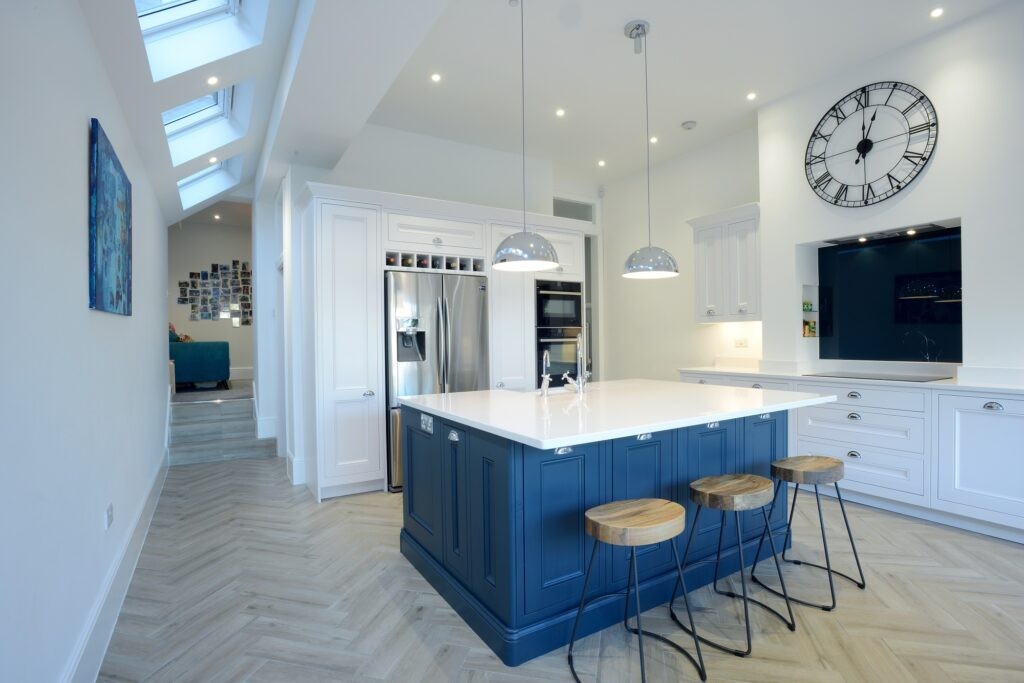
Understanding Sustainability for Your Home
Building a sustainable home extension begins with understanding the core principles of sustainability and its impact on our environment. Sustainable homes are designed to be energy-efficient, using resources wisely and producing minimal waste. By adopting eco-conscious practices, you can significantly reduce your home’s carbon footprint, which refers to the amount of greenhouse gases emitted due to its energy consumption and waste production. Creating a sustainable home extension is an empowering way to contribute positively to the environment while enjoying the benefits of greener, healthier living space.
Building a sustainable home extension goes beyond just environmental impact; it also brings numerous benefits to you as a homeowner. Firstly, sustainable designs often focus on optimising natural light and ventilation, creating a brighter and fresher living environment. Secondly, integrating energy-efficient technologies and appliances can lead to substantial cost savings on utility bills over time. Additionally, sustainable materials and design choices can enhance the aesthetics of your extension, creating a unique and appealing space that aligns with your eco-conscious values.
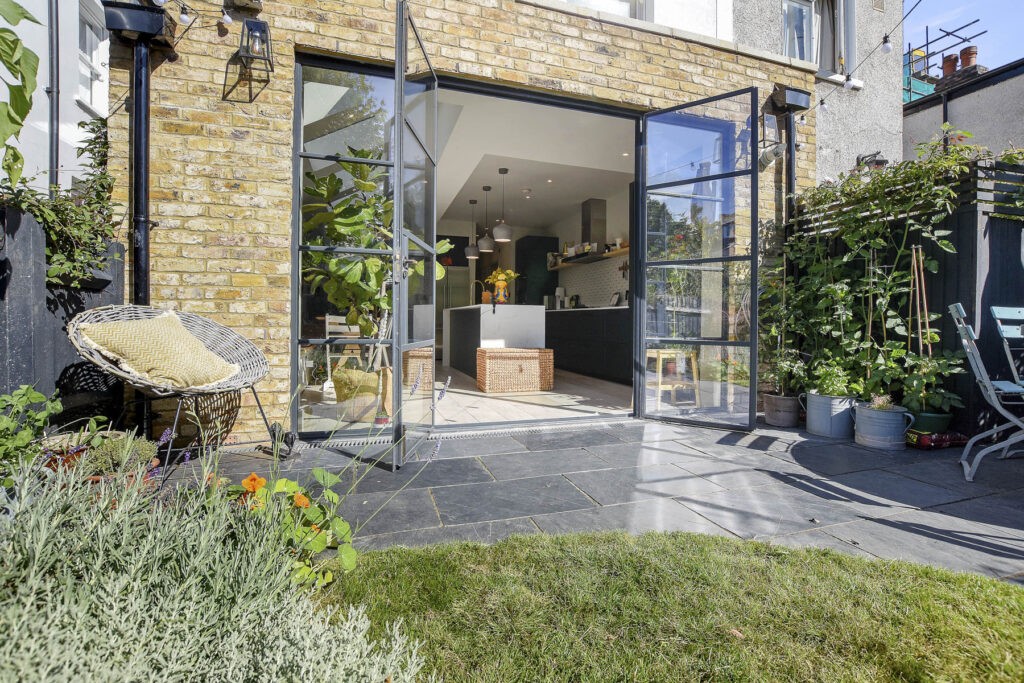
Exploring Sustainable Building Materials
Selecting suitable materials is a crucial aspect of sustainable home extensions. Using reclaimed wood is an excellent way to add character and history to your home extension while reducing the demand for new timber. Reclaimed wood is salvaged from old buildings, barns, and other structures, giving it a unique, weathered charm. By repurposing this wood, you contribute to sustainable forestry practices, conserve natural resources, and prevent valuable materials from ending up in landfills.
Bamboo is a highly sustainable material that grows rapidly and regenerates quickly, making it an eco-friendly alternative to traditional hardwoods. It can be used for flooring, cabinetry, and even structural elements. Bamboo’s strength, durability, and aesthetic appeal make it a popular choice for environmentally conscious homeowners.
Cork is harvested from the bark of cork oak trees, a process that doesn’t harm the tree, allowing it to grow and absorb carbon dioxide. This makes cork an incredibly renewable and eco-friendly material. It is often used for flooring and wall coverings, offering excellent insulation properties and a unique texture.
Using recycled metal, such as steel and aluminium, significantly reduces the energy and resource-intensive process of mining and refining raw metals. Recycled metal can be used for structural elements, roofing, and siding, providing strength and longevity to your home extension.
Conventional paints can release harmful volatile organic compounds (VOCs) into the air. This contributes to indoor air pollution and potential health issues. On the other hand, low-VOC paints have reduced levels of these harmful chemicals. This makes them a safer and more environmentally friendly choice.
Sustainable composite materials are engineered products that combine recycled plastic with other natural fibres like wood or agricultural waste. These materials are sturdy, long-lasting, and highly resistant to decay and pests. They can be used for decking, cladding, and outdoor structures.
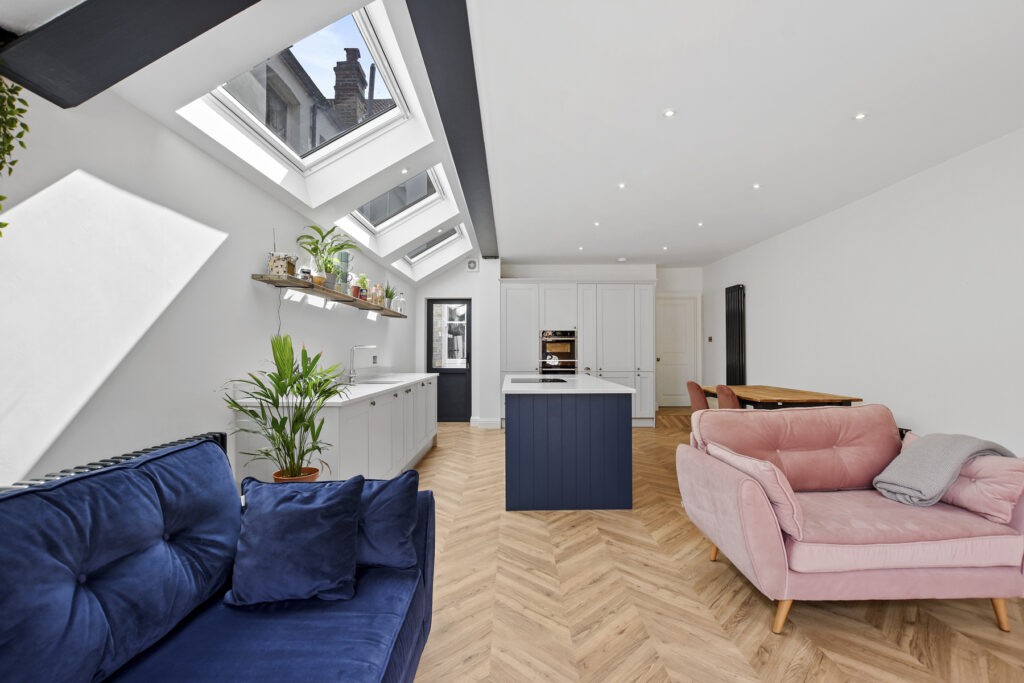
Energy-Efficient Solutions for Your Extension
Energy efficiency is at the heart of sustainable home extensions. By incorporating energy-saving technologies, you can significantly reduce your home’s energy consumption and its impact on the environment. Consider installing energy-efficient windows and doors that provide better insulation, preventing heat loss during winters and heat gain during summers. Incorporating skylights and solar tubes will maximise natural light, reducing the need for artificial lighting during daylight hours.
Switch to LED lighting, which consumes less electricity and has a longer lifespan than traditional incandescent bulbs. Smart home systems enable you to control energy usage remotely, ensuring lights and appliances are only active when needed. Implementing energy-efficient appliances and heating, ventilation, and air conditioning (HVAC) systems will minimise energy consumption and utility costs.
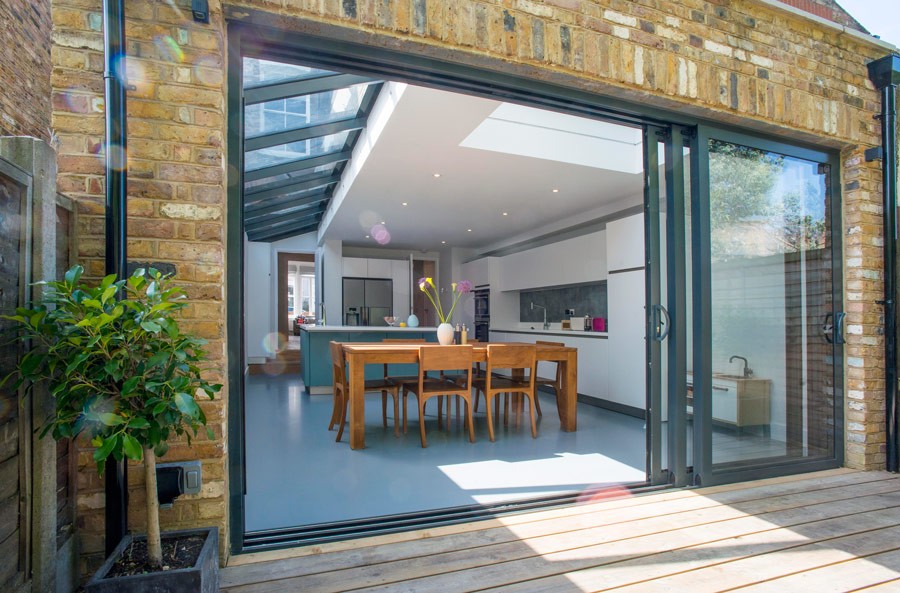
Harmony with Nature
Creating a sustainable home extension also means blending the structure with its natural surroundings. Additionally, utilising the natural elements to create a comfortable living space. Consider incorporating green roofs and living walls to enhance insulation, reduce rainwater runoff, and provide habitats for wildlife. Choose native plants for landscaping, which require less water and support the local ecosystem. Position your extension to capture maximum natural light and ventilation. By optimising its orientation, you maximise natural light and heat from the sun during colder months. While also shading it during hot summers.
Use natural materials such as stone and wood to connect indoor and outdoor spaces seamlessly. Utilise thermal mass, such as exposed concrete floors or stone walls, to absorb and release heat gradually. Employ natural ventilation through well-placed windows and vents to encourage airflow and reduce reliance on air conditioning.

Renewable Energy & Water Conservation Solutions
Embracing renewable energy sources is a game-changer in sustainable home extensions. Integrating renewable energy sources into your sustainable home extension is an excellent way to reduce its carbon footprint. Consider installing solar panels on the roof to harness clean and renewable energy from the sun. Solar panels convert sunlight into electricity, allowing you to power your home with clean and renewable energy. By harnessing solar power, you can reduce or eliminate your reliance on traditional energy sources, leading to significant long-term cost savings and environmental benefits.
A solar water heater can efficiently heat water, reducing the energy demand from traditional water heating systems. For regions with ample wind resources, small-scale wind turbines can also be an option to generate electricity.
Water conservation plays a vital role in sustainable home extensions. Implement rainwater harvesting systems to collect and store rainwater for irrigation and non-potable uses, such as toilet flushing and laundry. Greywater recycling systems can treat and reuse water from sinks, showers, and washing machines for irrigation purposes. Low-flow fixtures, such as toilets and faucets, significantly reduce water consumption without compromising performance.


